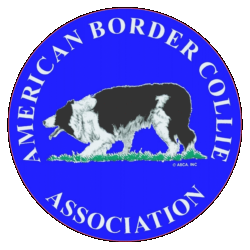The ABCA strongly encourages members to be aware of the health issues that affect Border Collies. While the Border Collie is generally considered a healthy breed, there are several genetic diseases that are both serious and common enough to be of concern. Breeders must carefully screen prospective parents to reduce or eliminate the possibility these diseases will show up in the pups. Buyers should confirm such health checks have been done for any pups or dogs they are considering. The information below is intended to educate both breeders and buyers on the main health and genetic issues facing the Border Collie at this time.
Genetic Diseases
To be considered a genetic disease, a health problem needs to have been demonstrated to be heritable, that is, passed on through one or both parents. Some diseases have high heritability, which means if the genes are present, the individual will have the disease, and some diseases have low heritability, meaning both genetic and environmental factors are involved in whether the disease occurs. It is generally easier to control diseases with high heritability because all individuals with the genetic makeup for the disease can usually be identified. The term heritable disease should be distinguished from the term congenital disease, or problems that are present from birth, which may or may not be heritable.
Disease Summary
The document below summarizes the main genetic diseases affecting the Border Collie.
Additional information for each of the diseases can be found on the ABCA Health and Education Foundation website.
ABCA Health and Education Foundation
Deafness
Deafness in Border Collies may be the result of genetic or non-genetic factors. The document below summarizes the various causes of deafness.
Common Diseases with Questionable Heritable Cause:
Osteochondritis Dissecans (OCD)
OCD is a condition that occurs primarily in puppies between the ages of 4-9 months, but can also be found in older puppies. It is considered to be a common disease in rapidly growing dogs of large breeds. However, medium breeds such as the Border Collie can also have a high incidence of this disease. It is seen twice as often in males as in females. The shoulder joint is the most commonly affected site but it can be seen in stifles, elbows, hocks or other joints. The diagnosis is usually confirmed by x-ray of the involved joints. In approximately one third of the cases of OCD, the disease is bilateral (in both joints). Occasionally, it is present in several different joints in the same individual. OCD is thought to be caused by a problem in the growth rate of the joint cartilage relative to the underlying subchondral bone.
Although the factors that cause OCD are not completely understood, direct factors considered to be involved in the development of OCD are rapid growth and trauma to the joint. Indirect factors affecting rapid growth include nutrition, hormones, and genetic predisposition to rapid growth and large size. Indirect influences that may lead to increased trauma to the joint include conformation and behavior, which are also influenced by heredity. Therefore, the genetic link for most types of OCD is considered to be indirect, that is, an inherited tendency. Certain sites for OCD lesions, such as the elbow, appear to have a greater direct genetic contribution and a higher heritability than other sites, such as the shoulder. The most important contributing factor in OCD of the shoulder, the most common site, is thought to be trauma. OCD can best be prevented in growing puppies by controlling the main precipitating factors, overnutrition and activities that could result in injury to the joints.
Because factors involved in the heritability of OCD are considered to be indirect, and therefore not easily controlled by selection, ABCA has no breeding recommendations for OCD at this time.
Genetic Diseases Not Considered to be a Significant Problem at this Time:
Progressive Retinal Atrophy (PRA)
PRA is a progressive disease where tissue in the retina of the eye is destroyed. It may initially be noticed as decreased ability of the dog to see at night, and may eventually progress to total blindness.
Despite the persisting impression that this genetic disease is prevalent in the breed, extensive investigation has shown the incidence of PRA in Border Collies in North America to be extremely low to nonexistent. Therefore, the ABCA does not currently consider it a major health concern.
Elbow dysplasia
Elbow dysplasia is a general term used for what is essentially three different types of degenerative elbow disease. These diseases may occur singly or together and are thought to be caused by several different genes.
More and more owners are having their Border Collies’ elbows evaluated each year. However, OFA reports a 0% incidence of elbow dysplasia for 210 Border Collies tested from January 1974-December 1999. ABCA does not consider elbow dysplasia a significant health problem in the breed at this time.
Common Diseases with No Known Heritable Contribution:
Focal/Multifocal Acquired Retinopathy (FMAR):
This inflammatory eye disease is common in many working breeds and is probably the most frequently seen retinal lesion in Border Collies. Sometimes called “distemper scars” or “worm scars”, it is characterized by lesions in the retina that can accumulate over the years, often leading to impaired vision and sometimes leading to blindness. The lesions have a typical “bull’s eye” pattern, and tend to be asymmetrical (affect one eye more than the other). The age of onset and rate of progression varies greatly from individual to individual. Males are more frequently affected than females. The characteristics of this disease strongly suggest environmental cause; no heritable pattern has ever been established for its occurrence. Its pathology clearly distinguishes it from PRA, although it is sometimes mistaken for PRA, especially in the later stages of the disease.
